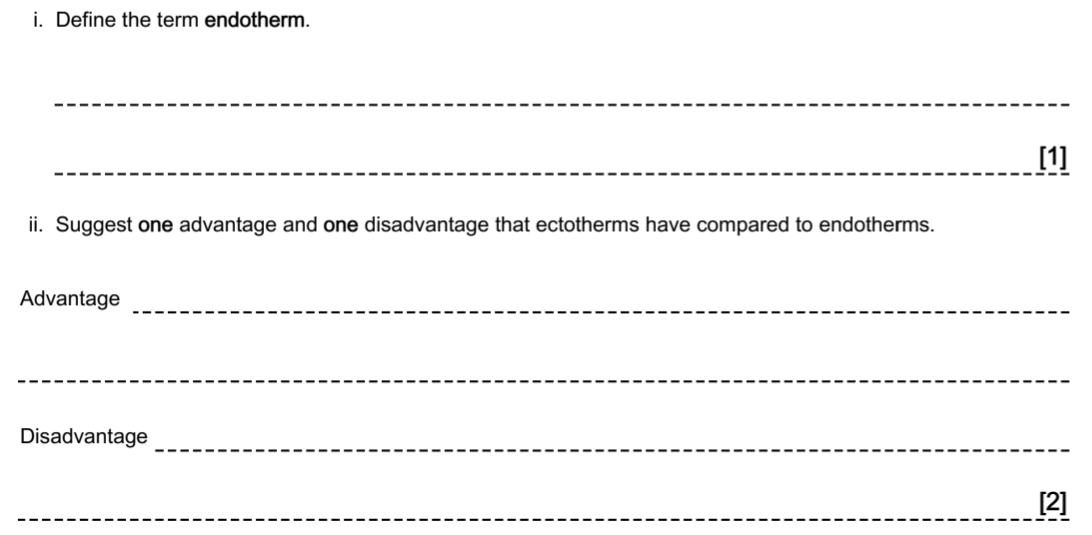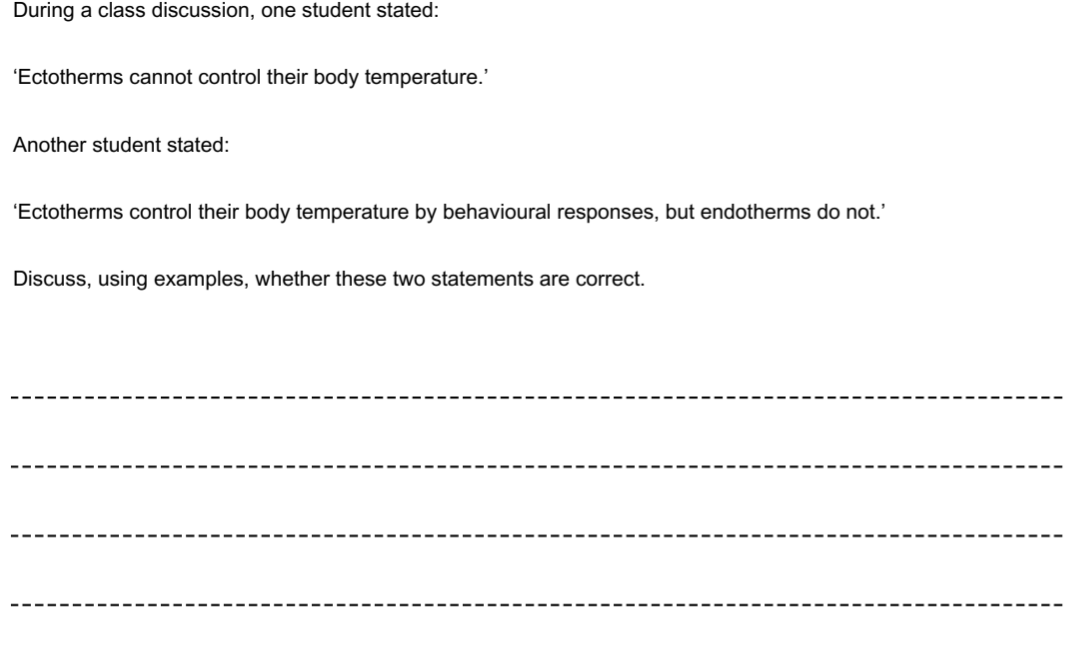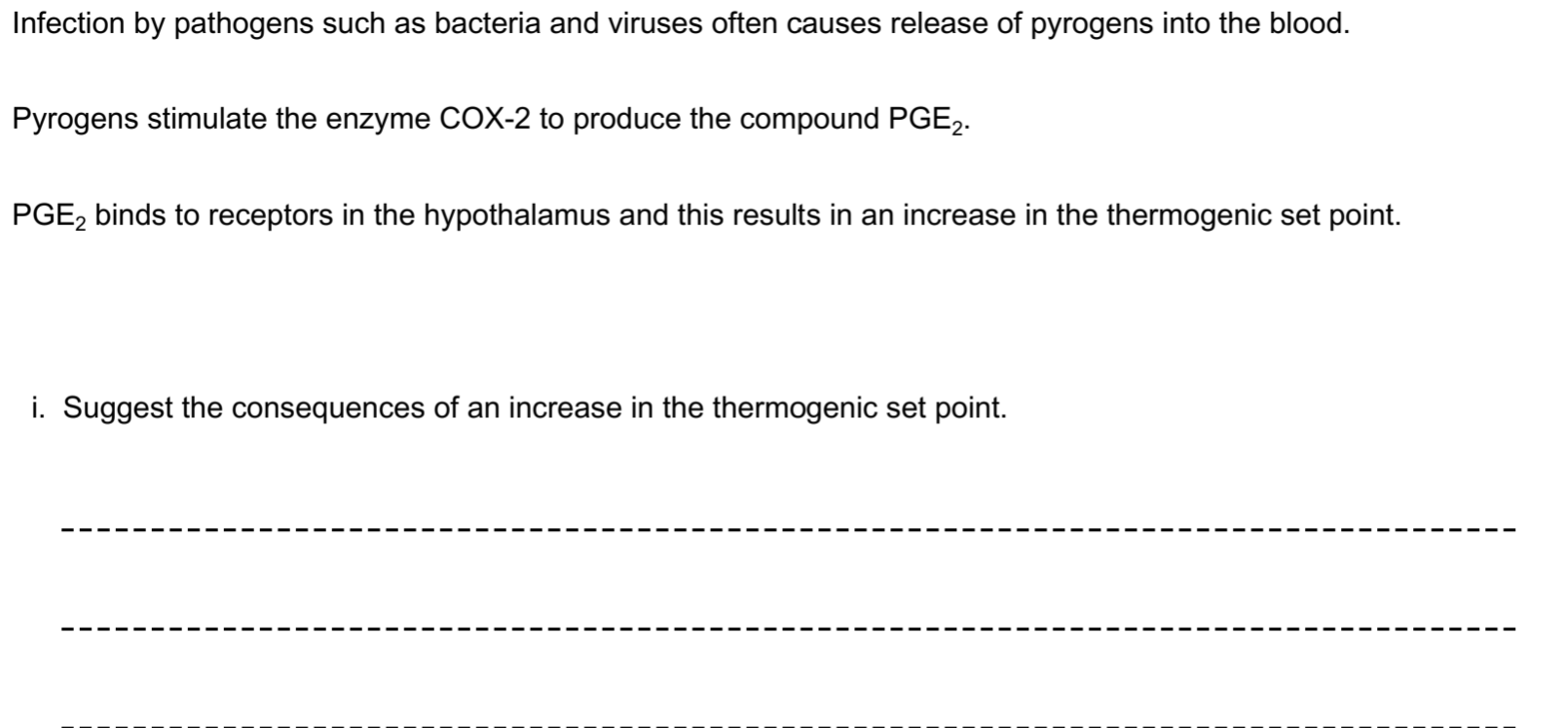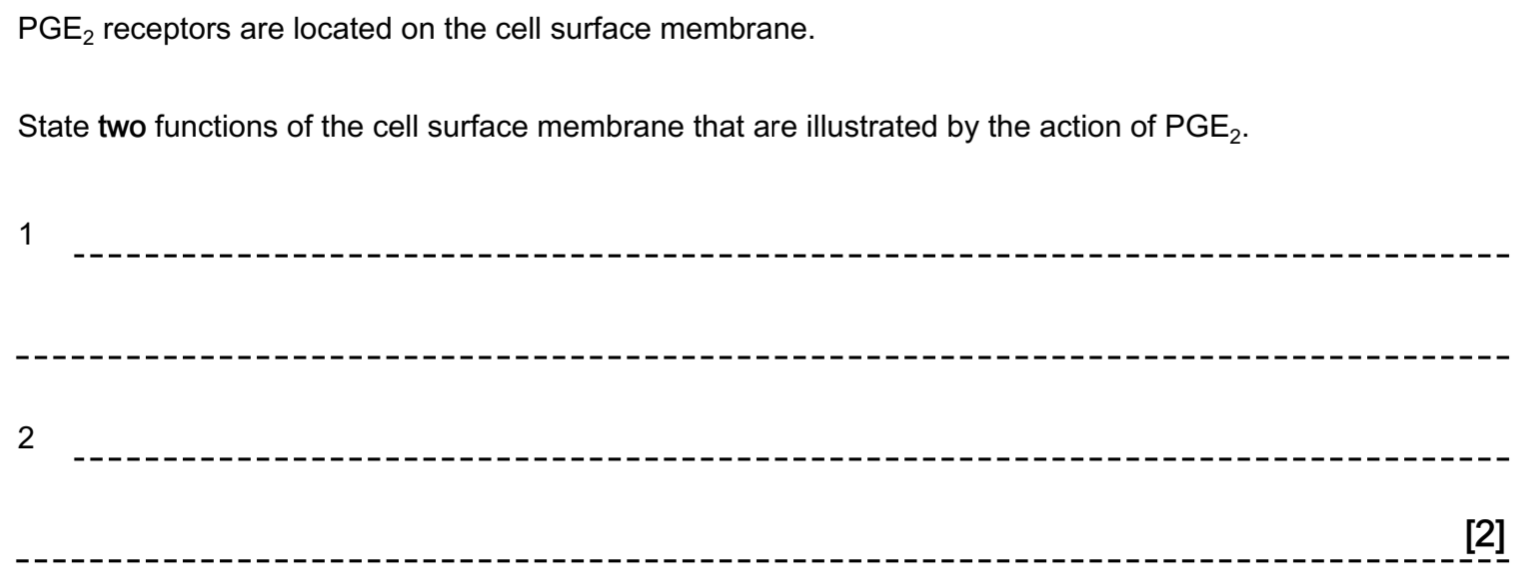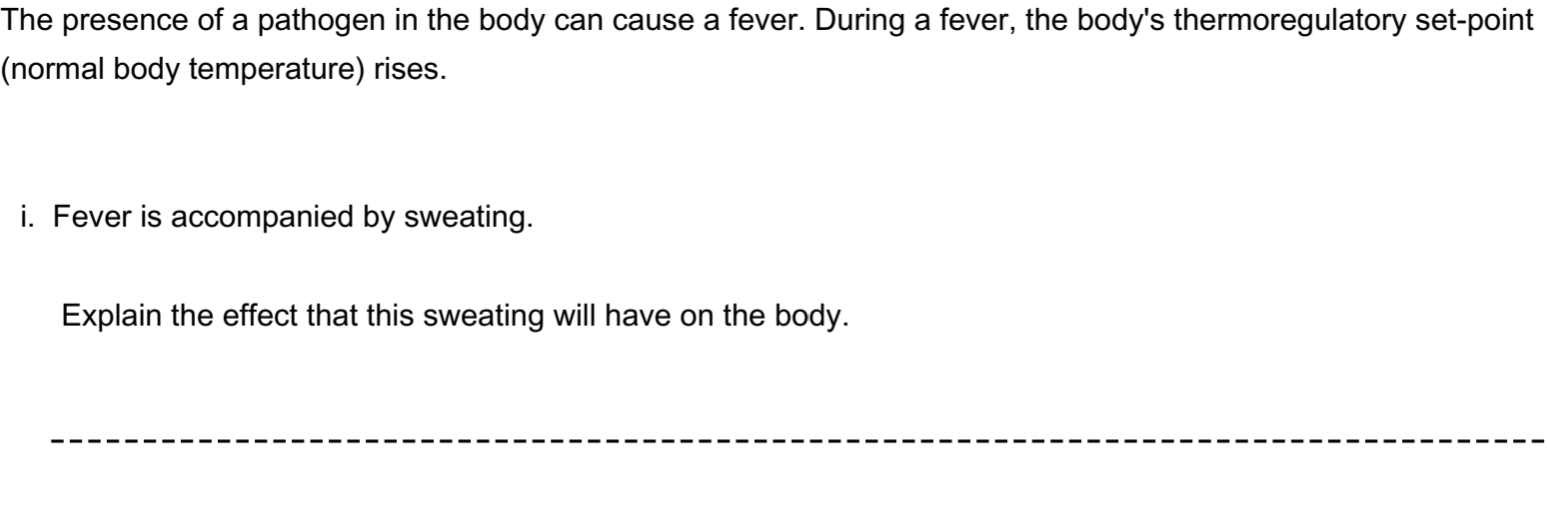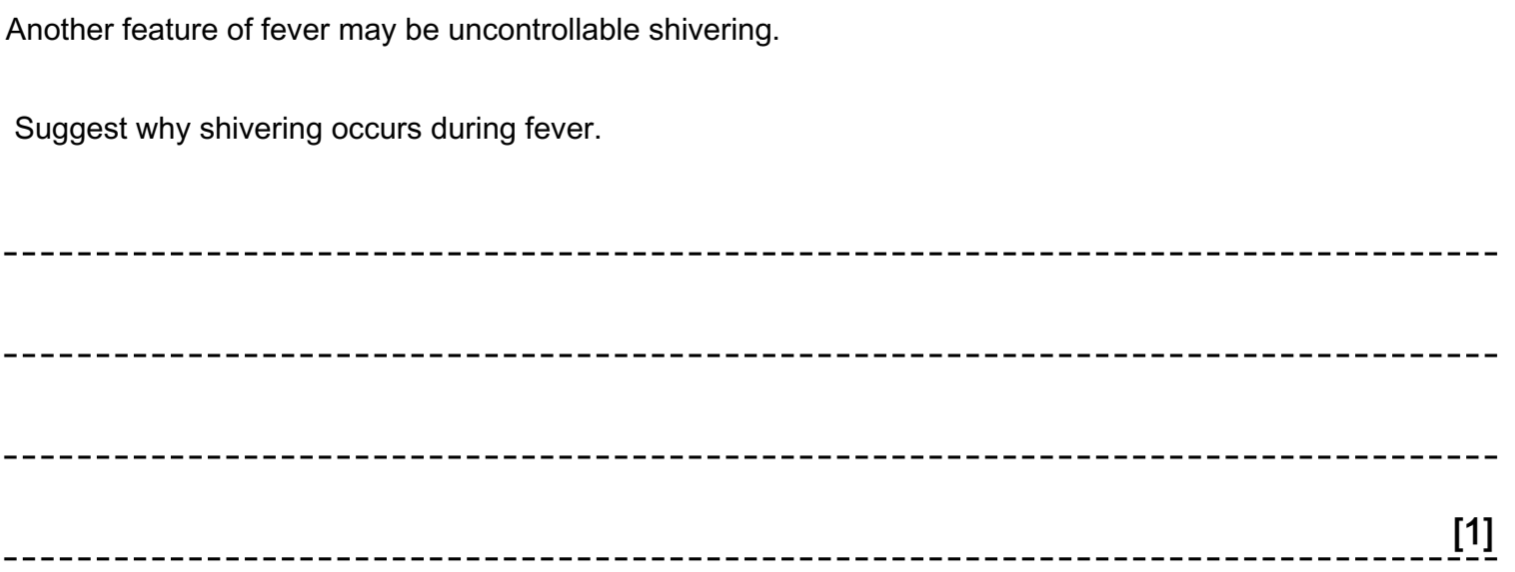Mastering OCR A Level Biology Section 5.1.1: Communication, Homeostasis and Thermoregulation - Common Questions & Mark Scheme Insights
Having analyzed extensive OCR past papers for specification section 5.1.1 (Communication and Homeostasis), I've identified the question patterns that consistently challenge students. Understanding how mark schemes assess terminology, comparative statements, and explanation depth is essential for maximizing marks. Let me guide you through five of the most frequently tested question types with real OCR examples.
Question Type 1: Defining Endotherms and Comparing with Ectotherms
Why this question type is common: Definitions are fundamental to the specification, and comparing ectotherms/endotherms tests understanding of energy budgets and thermoregulation strategies - core concepts in Module 5.
How to answer the definition (1 mark):
"(Endotherm) uses heat produced, within/internally, to maintain body temperature"
Mark scheme insight: The mark scheme allows "uses heat from metabolic processes to maintain body temperature" as an alternative. It specifically says to "IGNORE control" - so saying endotherms "control body temperature" won't earn the mark. The examiner's comments note that "Most responses only included part of the definition for an endotherm with few responses mentioning 'heat'." You must mention both the source of heat (internal/metabolic) AND that it maintains body temperature.
How to answer advantage/disadvantage (2 marks):
Advantage (choose one):
"Less, food/energy, used/needed"
"More, energy/nutrients, can be used for, growth/reproduction"
"Less time spent, feeding/finding food"
Disadvantage (choose one):
"Metabolism slows/less active, at low(er) (environmental) temperatures"
"Can be at risk from predators when body temperature is low"
"Less able/unable to, hunt for/find, food when body temperature is low"
Mark scheme insight: For the advantage, the mark scheme says "IGNORE food" for mark point 2 but allows "named nutrients e.g. glucose." Mark point 3 allows "able to survive in habitats with low availability of food." For disadvantages, the mark scheme allows "less able/unable, to live in cold climates" or "susceptible to freezing" as alternatives to mark point 4.
Common mistakes:
Only stating "endotherms maintain body temperature" without mentioning internal heat production
Vague statements about "controlling temperature" without explaining energy implications
Not making clear comparative statements for advantages/disadvantages
Question Type 2: Extended Response - Discussing Thermoregulation in Ectotherms vs Endotherms
Why this question type is common: This is a Level of Response question testing detailed understanding of both ectothermic and endothermic thermoregulation. It assesses ability to evaluate statements, provide examples, and construct a logical argument.
How to approach Level of Response questions:
Level 3 (5-6 marks):
Detailed discussion of BOTH statements
Uses appropriate examples for BOTH ectotherms AND endotherms
Clear, logical structure with relevant information
Level 2 (3-4 marks):
Discussion of both statements
Uses appropriate examples for EITHER ectotherms OR endotherms
Line of reasoning with some structure
Level 1 (1-2 marks):
Discussion of either statement
Uses appropriate examples
Attempt at logical structure
Key points to include:
Statement 1 - Ectotherms:
Ectotherms control body temperature less well than endotherms
Ectotherm temperature varies with environment
Ectotherms CAN control body temperature using behaviour
Ectotherms use mostly behavioural but some physiological methods
Examples: basking, moving to cooler/warmer places, lying on hot rocks
Statement 2 - Endotherms:
Endotherms use mostly physiological/metabolic methods, but SOME behavioural
Examples of physiological: sweating, vasoconstriction/vasodilation, shivering, hairs standing on end, metabolic heat
Examples of behavioural: hibernation, aestivation, use of burrows/shade, migration, huddling, humans wearing clothes
Mark scheme insight: The mark scheme specifically notes "Loss of mark for communication statement if incorrect science used e.g endotherms use the mainly behaviour to control body temperature or more than 50% irrelevant information." The examiner's comments praise candidates who gave "well-chosen and clearly described" examples like "lizards basking, penguins huddling, elephants splashing water."
Question Type 3: Consequences of Fever and Cell Membrane Functions
Why this question type is common: This tests application of homeostasis principles to real physiological scenarios and links thermoregulation to cell signalling - connecting multiple specification topics.
How to answer consequences of increased set point (2 marks maximum from):
"(Increase in set point) will result in fever"
"Raised body temperatures help to, kill/prevent increase in number of, pathogens"
"Causes an increase in antibody production/faster immune response"
"High body temperature can result in organ, damage/failure"
Mark scheme insight: The mark scheme allows "viruses/bacteria for pathogens" and specifically says "IGNORE affects enzyme activity." The examiner's comments note "This question proved challenging... Most candidates mentioned enzyme activity and didn't make the link between increased temperature and the body's response to pathogens."
How to answer membrane functions (2 marks):
"(Membrane acts in) cell signalling"
"(Membrane) controls, entry/exit, to cell"
Mark scheme insight: The mark scheme allows "cell communication" for cell signalling and accepts "is partially permeable/selectively permeable/acts as a barrier" for the second function. Good responses recognized both functions illustrated by PGE2 binding to receptors.
Question Type 4: Positive Feedback in Hypothermia
Why this question type is common: Positive feedback is less commonly discussed than negative feedback, making it an excellent discriminator. This tests understanding of feedback mechanisms and their physiological consequences.
Step-by-step approach (4 marks maximum from):
"Positive feedback, is when an initial (biological) change is, increased further/exaggerated/AW"
"Lower temperature reduces kinetic energy (of molecules)"
"Enzyme activity, slowed/reduced"
"Respiration rate/metabolism, slowed/reduced"
"Less (metabolic/internal) heat generated"
"(So that body) temperature drops further"
Mark scheme insight: The mark scheme provides excellent alternative phrasings:
For mark point 1: "it is when a change causes system to go further from, norm/optimum" OR "it is when a decrease leads to a further decrease"
For mark point 2: "ALLOW fewer successful collisions/fewer ESCs formed"
For mark point 3: "IGNORE enzymes stop working/no enzyme activity"
For mark point 4: "IGNORE respiration stops"
For mark point 5: "ALLOW less heat, produced/created"
The mark scheme also notes that if you write "change causes system to go further from, norm/optimum and so a decrease in temperature leads to further decrease" you can earn both mark points 1 AND 6 in one sentence.
Common mistakes: The examiner's comments note "Answers often described the principle of positive feedback correctly and stated that the temperature would continue to fall, but few showed correct reasoning as to why this would occur. Generally candidates suggested inappropriate physiological responses such as sweating when a mammal was getting colder."
Question Type 5: Explaining Sweating During Fever and Physiological Responses
Why this question type is common: This tests understanding of thermoregulation mechanisms in the context of homeostatic set-point changes. It requires application of water properties and understanding of how set-point shifts affect physiological responses.
How to answer the sweating question (2 marks maximum from):
"Evaporation will, have a cooling effect/reduce (body) temperature"
"Heat, taken from/supplied by, the body/blood/skin, is, needed/used for, evaporation"
"Idea that water has a high latent heat of, vaporisation/evaporation"
Mark scheme insight: Mark point 2 requires precision - the mark scheme specifically states "ACCEPT evaporation uses latent heat" and "Look for a clear statement that body heat is being used for evaporation." The examiner's comments note that "Phrases such as 'taking with it', 'transferred' and 'absorbed' did not indicate that the body heat was used to provide the energy for evaporation." This is a critical distinction - heat must be USED for evaporation, not just moved or carried away.
Mark point 3 accepts alternative phrasings: "e.g. evaporation of water needs a lot of, energy/heat"
How to answer the shivering question (1 mark):
"Idea that to increase body temperature as it is lower than the 'new' set-point (even though body is hot)"
Mark scheme insight: The mark scheme gives a helpful example: "e.g. as the new 'normal' body temperature is higher, the body is using shivering to raise the temperature of the internal environment." The examiner's comments reveal the key issue: "Although most candidates clearly understood the principles of shivering and its role in raising body temperature, relatively few had absorbed the information given at the start of the question. Candidates were expected to relate this to the rise in the thermoregulatory set-point during a fever."
Common mistakes:
Saying sweat "takes heat away" or heat is "transferred" rather than heat being USED for evaporation
Not linking shivering to the CHANGED set-point during fever
Describing shivering's mechanism without explaining WHY it occurs when the body already feels hot
Extension - Why giving alcohol to hypothermia patients is dangerous (Question 12(b)):
This is another common application question worth understanding (2 marks maximum from):
"Vasodilation results in more blood nearer to the skin surface"
"Idea that will lose (even) more heat/further heat loss (from body)/body temperature decreases further"
"(Named) organ(s) will not be able to maintain, function/metabolism"
Mark scheme precision: The mark scheme is very strict about vasodilation:
"Vasodilation must be in correct context (arterioles)"
"DO NOT CREDIT (large) arteries/capillaries/veins, relaxing/dilating/expanding"
"DO NOT CREDIT blood vessels moving closer to the surface"
"Just 'the body loses heat' is not enough" (must say MORE or FURTHER heat loss)
The examiner's comments note "Vasodilation continues to be misunderstood. Candidates often wrote that arteries/capillaries/veins dilated or that blood vessels actually moved closer to the skin surface during the process."
General Tips for Section 5.1.1 Success
1. Master comparative terminology
Questions frequently require comparisons between ectotherms/endotherms or different thermoregulation methods:
Use comparative terms: "more," "less," "greater," "smaller"
State both organisms/processes: "Ectotherms use behavioural responses, endotherms use physiological responses" ✓
"Ectotherms use behavioural responses" alone ✗
2. Learn complete definitions
Mark schemes penalize incomplete definitions:
Endotherm: Must mention BOTH internal heat production AND maintaining temperature
Homeostasis: Must mention maintaining internal environment AND within narrow limits
Cell signalling: Must mention communication between cells using chemical/electrical signals
3. Understand what mark schemes IGNORE vs REJECT
IGNORE means it won't gain credit but won't lose you marks:
"IGNORE control" in endotherm definitions
"IGNORE enzymes stop working" in hypothermia explanations
DO NOT CREDIT/REJECT means it's incorrect and may contradict correct statements:
"DO NOT CREDIT alpha cells are produced"
"DO NOT CREDIT blood vessels moving closer to skin" (for vasodilation)
4. Use technical terms correctly and spell them accurately
For QWC marks, you must:
Use terms in appropriate context
Spell them correctly
Use at least the specified number (usually 3)
Common technical terms in 5.1.1:
Thermoregulation: hypothalamus, peripheral receptors, vasoconstriction, vasodilation, shivering, piloerection
Homeostasis: negative feedback, positive feedback, receptor, effector, coordination centre
Hormones: glucagon, insulin, alpha cells, beta cells, islets of Langerhans, glycogenolysis, gluconeogenesis
5. Understand vasodilation/vasoconstriction precisely
This is commonly misunderstood. Mark schemes specifically reject:
Blood vessels moving closer to/further from skin
Capillaries dilating/constricting
Arteries (rather than arterioles) dilating
Correct explanation:
Vasodilation: arterioles near skin surface dilate, more blood flows near surface, more heat lost by radiation
Vasoconstriction: arterioles near skin surface constrict, less blood flows near surface, less heat lost
6. Link structure to function in explanations
Don't just describe processes - explain their consequences:
Shivering generates heat ✓ Why? Muscle contraction involves respiration which releases heat
Sweating cools the body ✓ Why? Evaporation of water requires latent heat, taken from body
Huddling reduces heat loss ✓ Why? Reduces exposed surface area
7. Provide relevant, specific examples
Mark schemes reward appropriate examples:
Ectotherm behaviour: basking, moving to shade, lying on hot rocks, changing body orientation
Endotherm behaviour: hibernation, aestivation, migration, huddling, wearing clothes
Endotherm physiology: sweating, shivering, vasodilation, vasoconstriction, piloerection
8. Understand positive vs negative feedback
Negative feedback:
Returns system to set point
Stabilizes the system
Most common in homeostasis
Example: blood glucose regulation
Positive feedback:
Takes system further from set point/norm
Amplifies the initial change
Less common, usually in specific situations
Examples: hypothermia, oxytocin in childbirth, blood clotting
Key Concepts to Master
Endotherms:
Generate heat internally through metabolism
Maintain relatively constant body temperature
Use mainly physiological responses (but some behavioural)
Require more energy/food
Active across wider temperature ranges
Ectotherms:
Rely on external heat sources
Body temperature varies with environment
Use mainly behavioural responses (but some physiological)
Require less energy/food
Activity limited at low temperatures
Thermoregulation mechanisms:
Peripheral thermoreceptors detect skin temperature
Hypothalamus detects blood/core temperature
Hypothalamus acts as thermoregulatory centre (NOT medulla oblongata)
Effectors: arterioles, sweat glands, hair erector muscles, skeletal muscles
Homeostasis principles:
Receptors detect changes
Coordination centre processes information
Effectors produce responses
Negative feedback returns to normal
Set point can change (e.g., fever increases thermogenic set point)
Cell signalling:
Communication between cells
Uses chemical signals (hormones, neurotransmitters)
Requires receptors on target cells
Complementary shape between signal and receptor
Can affect nearby cells (paracrine) or distant cells (endocrine)
Hormonal regulation:
Alpha cells secrete glucagon (when glucose low)
Beta cells secrete insulin (when glucose high)
Located in islets of Langerhans in pancreas
Glucagon promotes: glycogenolysis, gluconeogenesis, lipolysis
Insulin promotes: glucose uptake, glycogenesis, lipogenesis
Negative feedback regulates hormone secretion
Remember that Section 5.1.1 establishes foundational concepts for all homeostatic systems covered later (kidneys, immune system, etc.). Master the principles of feedback, thermoregulation, and hormonal control here, and you'll find later topics much more accessible.
The key to success with OCR mark schemes is precision - learn the specific terminology, understand what makes statements comparative, and always explain mechanisms rather than just describing outcomes. Mark schemes reward detailed understanding expressed clearly and accurately.
Good luck with your studies!

